Fixed solutions for missing or damaged teeth
At Dawood & Tanner, we take a specialist, restorative-led approach to replacing and protecting teeth using bespoke crowns and bridges. Our practice in London’s medical district delivers treatments that restore the strength, appearance and harmony of your smile—whether you’re repairing a single damaged tooth or replacing multiple missing teeth.
We are known for managing complex cases with outstanding results. Every restoration is individually planned, digitally designed, and fabricated using the finest materials. Working as part of an expert multidisciplinary team, we focus not only on aesthetics but also on long-term function, durability, and patient comfort—ensuring your crown or bridge integrates seamlessly into your bite.
Maintaining your bite and smile
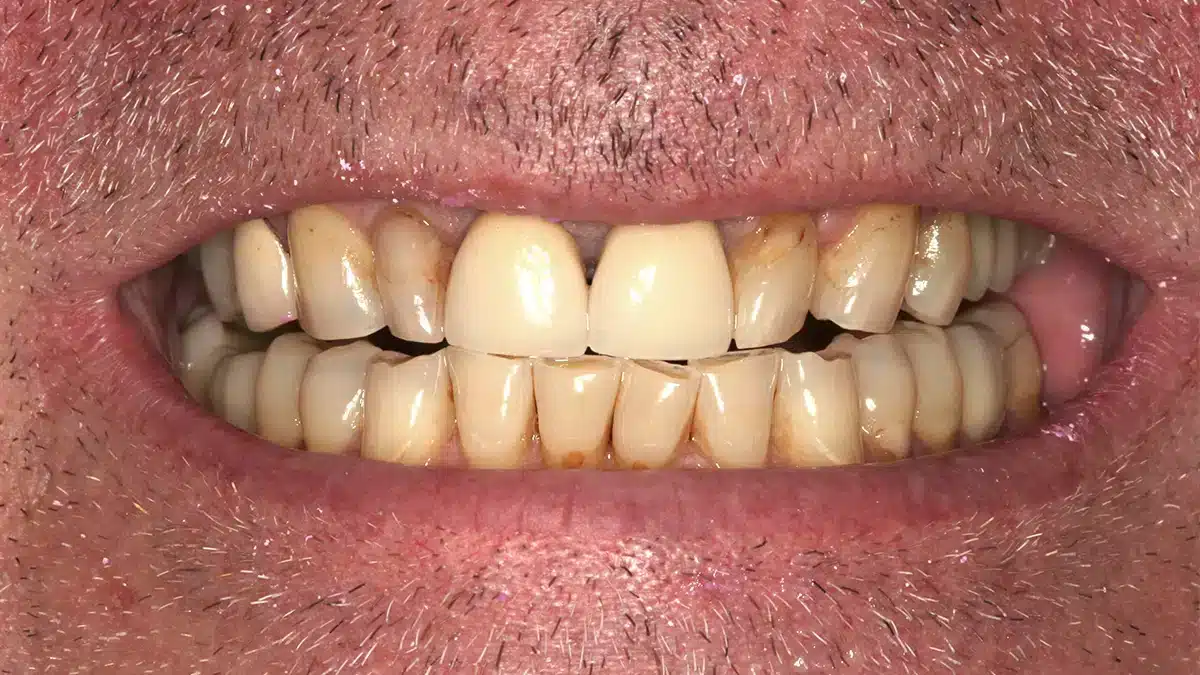

Treatment by Paul Holmes
Dental crowns built for strength and beauty
For protection and appearance
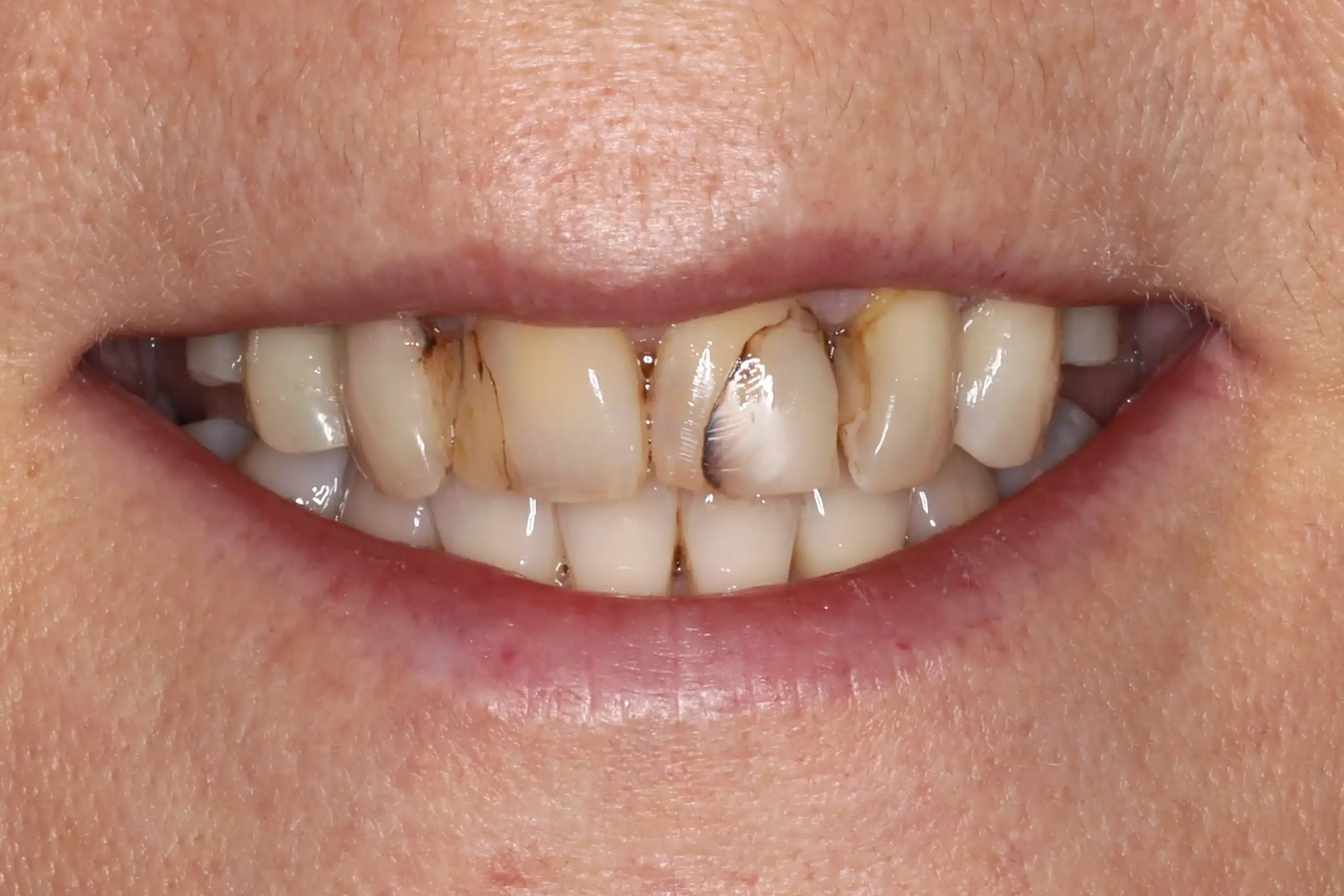
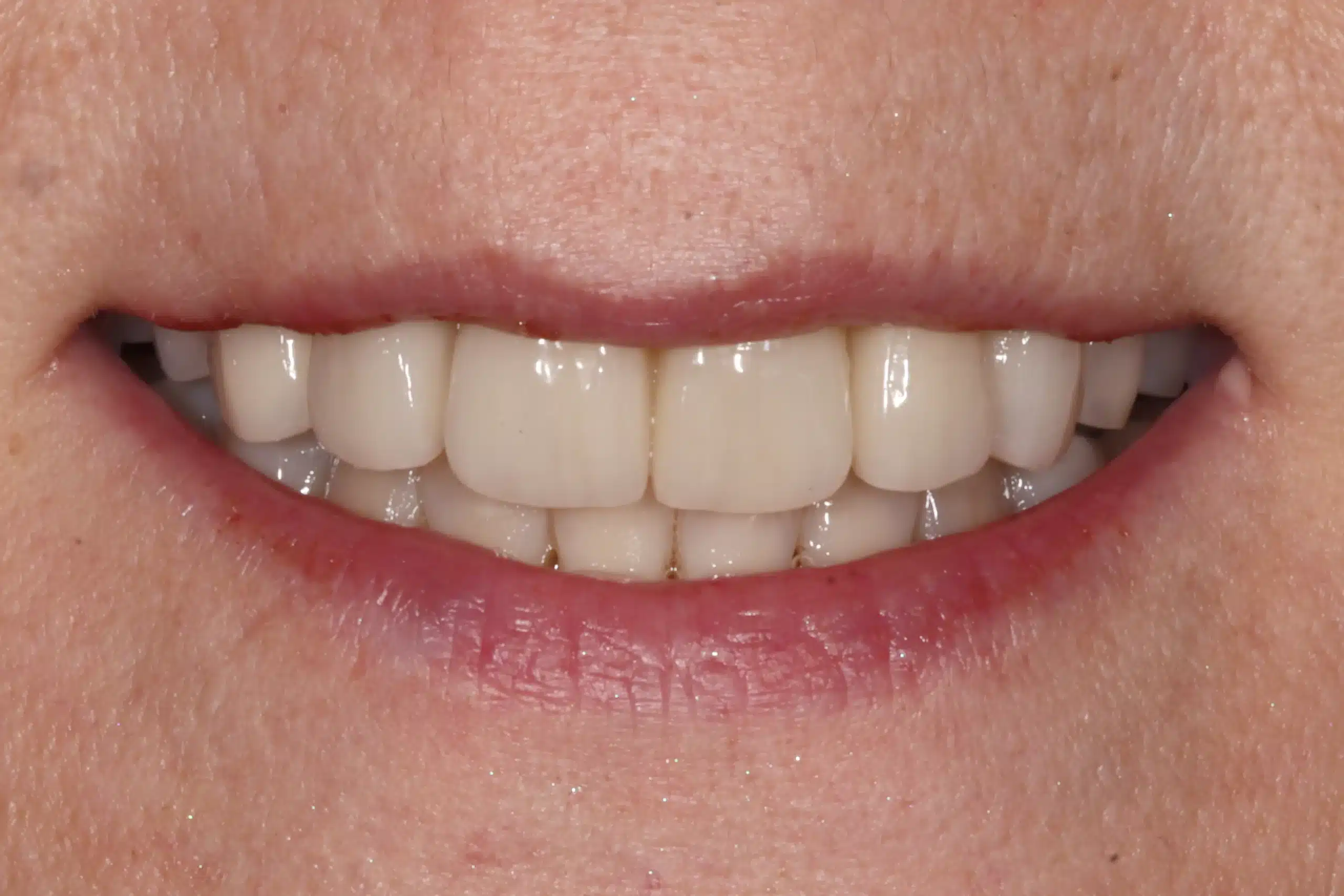
Treatment by Francesca Tosson
A dental crown is a custom-made restoration used to protect and rebuild a tooth that has been damaged or weakened. Meticulously crafted to encase the entire tooth surface, a crown provides both strength and long-term protection following decay, fracture, or extensive dental work. Each one is individually designed to replicate the form, function, and appearance of your natural tooth—ensuring a seamless and durable result.
Before we restore a tooth with a crown, we make sure that what is left of the tooth provides a strong foundation to ensure the stability and longevity of the crown.
Crowns are usually made of a porcelain material that is prepared by one of our expert dental laboratories. They are cemented onto the prepared tooth thus returning it to its correct shape and providing long lasting strength.
We take great pride in making sure that all our restorations match and appear as natural as your own existing teeth.
Fixed dental bridges to replace missing teeth
A well-made dental bridge can be an excellent solution for replacing one or more missing teeth — restoring both your smile and your confidence without the need for surgery.
This treatment offers a fixed, natural-looking replacement supported by the neighbouring teeth, and often enhances the appearance of those teeth in the process. It’s a practical, long-lasting option for filling gaps and protecting your bite from further strain.
Dental bridge process
To prepare for your bridge, the adjacent teeth are carefully reshaped so they can securely support the restoration. We always aim to preserve as much healthy tooth as possible, and if the supporting teeth are already restored or crowned, minimal adjustment is typically needed.
You’ll be involved throughout the process — from reviewing the shape and shade of your new teeth to trying out a provisional version before the final bridge is fitted. This gives us a chance to fine-tune the appearance and function, ensuring the result feels just right.
This patient had lost her confidence when smiling and also had trouble eating, as the teeth in her upper jaw were limiting her ability to bite properly.
We provided this patient with a porcelain bonded bridge on her upper jaw that not only reestablished her appearance, but also completely changed the function of her bite and oral health.
On her lower jaw, we placed two dental implants to support a 4 tooth bridge.
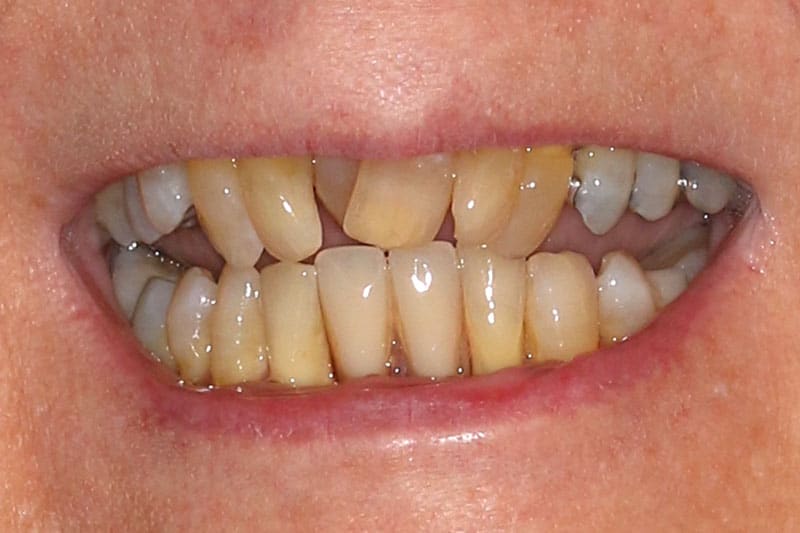
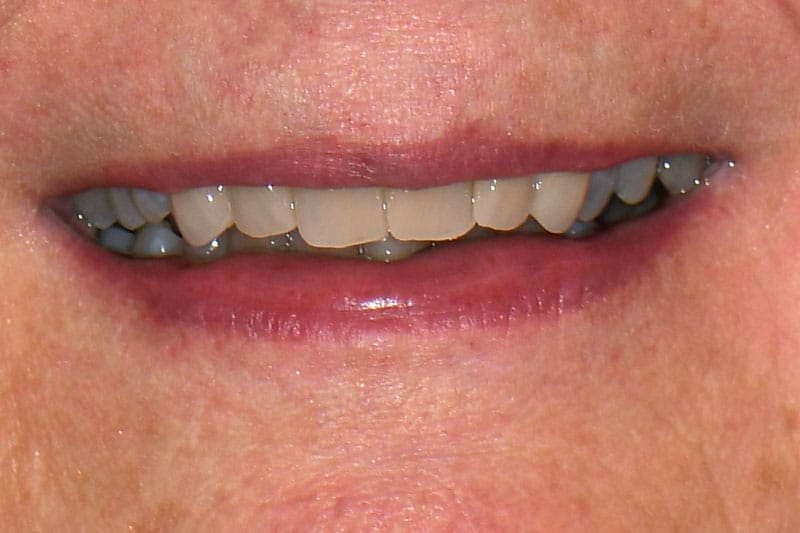
Treatment by Begoña Marti
Dental bridges may be a suitable solution in the following situations:
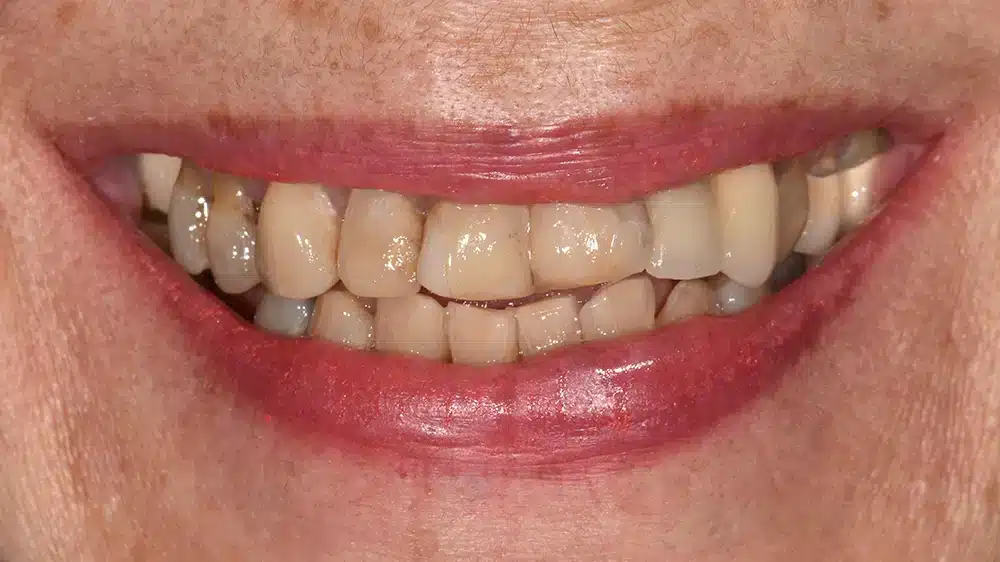
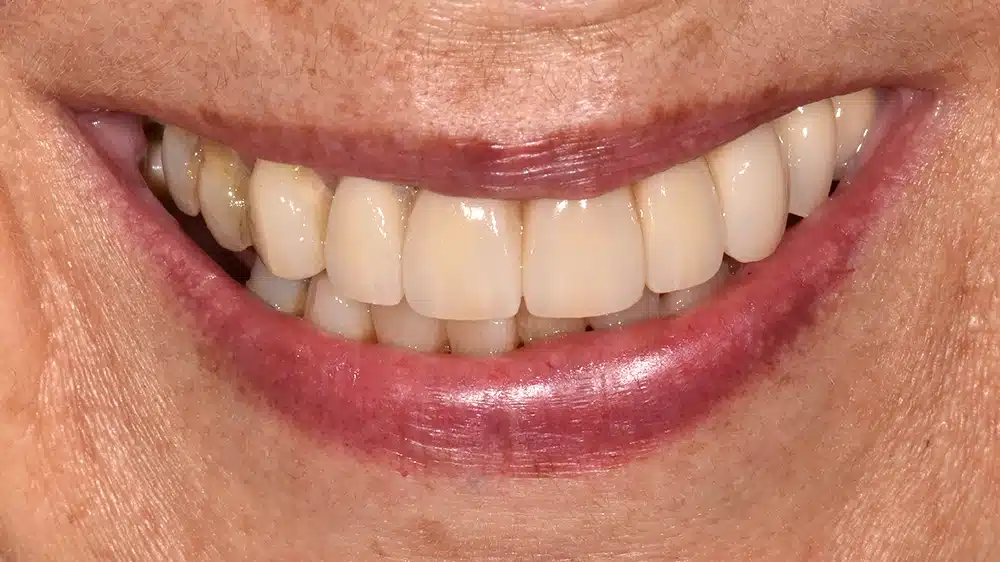
Treatment by Begoña Marti
- To fill a gap and restore a more regular, symmetrical appearance
- To improve the appearance and strength of a heavily filled or broken-down tooth
- When teeth are discoloured or permanently stained and require aesthetic enhancement
- To reposition the visible portion of a poorly aligned tooth by building it forward
- To provide support at one or both ends of a bridge replacing additional missing teeth
Preserving natural tooth structure:
Onlays & Overlays
In cases where teeth are extensively filled, fractured, or severely decayed, onlays and overlays provide a strong, long-lasting solution. These restorations are often recommended when there is not enough healthy tooth structure remaining to support a bonded composite filling.
At Dawood & Tanner, our priority is always to preserve natural tooth tissue whenever possible. While tooth-coloured composite fillings are ideal for many cases, inlays and onlays are chosen when added strength and durability are required—particularly in back teeth under heavy bite pressure.
An onlay restoration is often preferred over a full dental crown, as it allows more of the original tooth to be retained. This conservative approach strengthens the tooth while reducing the risk of future fractures and the need for more invasive treatment.
These two posterior teeth had been previously restored with large fillings, leaving insufficient natural tooth structure to support new conventional fillings.
Rather than resorting to full crowns, we opted for a conservative approach using laboratory-made porcelain overlays. These custom restorations preserved as much healthy tooth as possible while reinforcing the weakened structure, restoring both strength and function with a natural appearance.
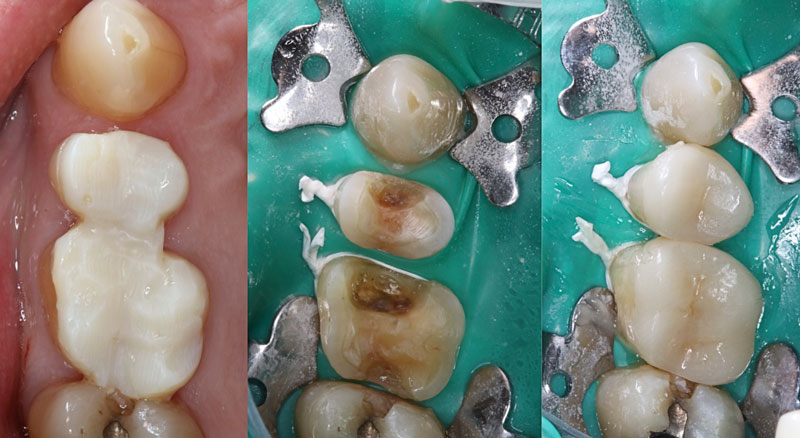
Treatment by Begoña Marti
FAQ's about dental crowns, bridges and onlays
Crowns are ideal for teeth with significant structural damage, large fillings, root canal treatment, or aesthetic concerns. Bridges are excellent options for replacing one or more missing teeth when adjacent teeth are healthy enough to provide support or when dental implants can’t be placed. During your consultation at our Wimpole Street practice, our specialists will determine if these treatments are appropriate for your specific situation.
Crown and bridge treatments depend on the complexity of the case. The timeline will be confirmed by the clinician and tailored to the case needs. At the first visit, we prepare your teeth and take detailed impressions. You’ll wear custom temporary restorations while your permanent crown or bridge is being fabricated (typically a few weeks). At your second appointment, we place and adjust your final restoration to ensure perfect fit and comfort.
Absolutely. Our specialists meticulously select materials and work closely with premier dental laboratories to create restorations that blend seamlessly with your natural teeth in terms of shape, size, colour, and translucency. The result is a restoration that’s virtually indistinguishable from your natural teeth.
We ensure your comfort throughout treatment with effective local anaesthesia during preparation procedures. Most patients report minimal discomfort during and after treatment. Any temporary sensitivity typically resolves within days of receiving your permanent restoration.
What is the expected lifespan of crowns and bridges from Dawood & Tanner?
With proper care and maintenance, our premium restorations typically last for many years. Patients enjoy greater longevity with excellent oral hygiene practices and regular professional examinations and maintenance.
Maintain thorough oral hygiene with regular brushing and flossing. For bridges, use specialised cleaning tools such as floss threaders or interdental brushes to clean beneath the pontic (replacement tooth). Attend regular check-ups and professional cleanings at our London practice to ensure the ongoing health of both your restoration and supporting structures.
Our specialist team brings advanced training, extensive experience, and refined technical skills to every restoration. We combine digital technology, premium materials, and collaboration with master dental technicians to create restorations of exceptional quality. Our comprehensive approach addresses not just the immediate restoration but your overall oral health and function.
Yes, we routinely replace older restorations that have deteriorated or no longer meet aesthetic expectations. Our specialists can evaluate your existing crown or bridge and recommend appropriate replacement options to enhance both function and appearance.
An onlay is a custom-made restoration that covers one or more cusps of a tooth, reinforcing its structure without fully encasing it. Unlike crowns, which cover the entire visible surface, onlays preserve more of your natural tooth. They are ideal for restoring teeth that are too damaged for a filling but don’t require full coverage.
We typically recommend onlays when a tooth has a large filling, crack, or moderate structural damage. Onlays provide more strength and coverage than a standard bonded filling while avoiding the greater enamel removal needed for a full crown. They’re a conservative, durable solution.
Yes, when carefully bonded and maintained, ceramic or composite onlays can last as long as crowns. They’re strong enough to withstand normal bite forces and help protect the underlying tooth from future fractures—especially when replacing large, worn fillings.
